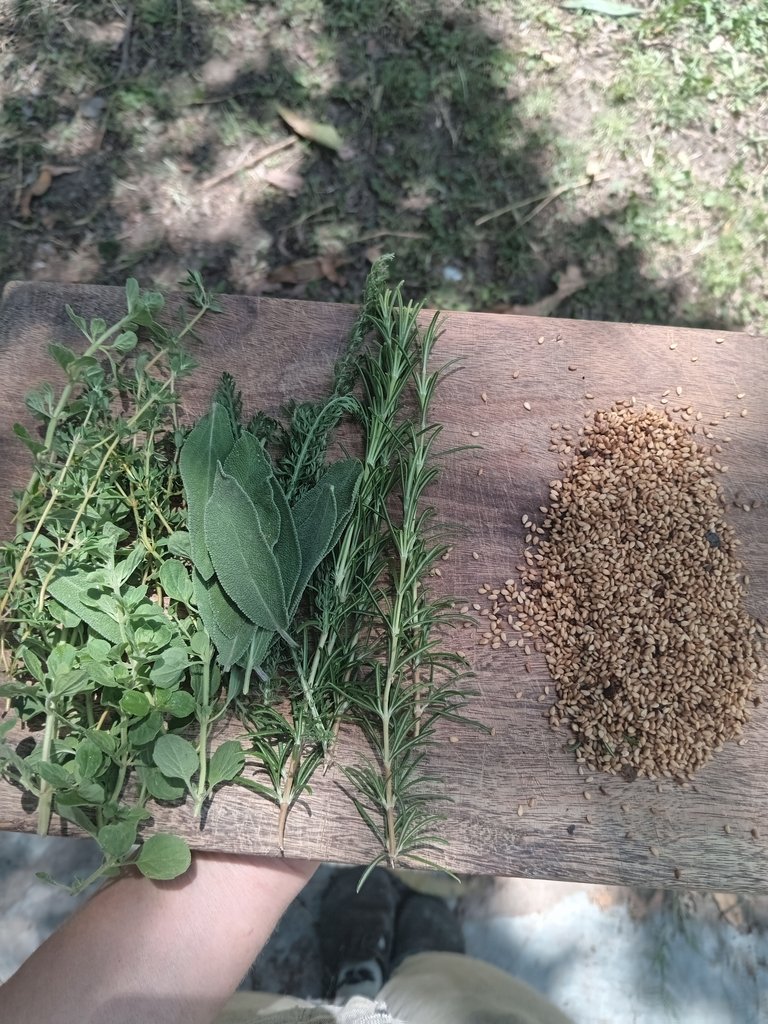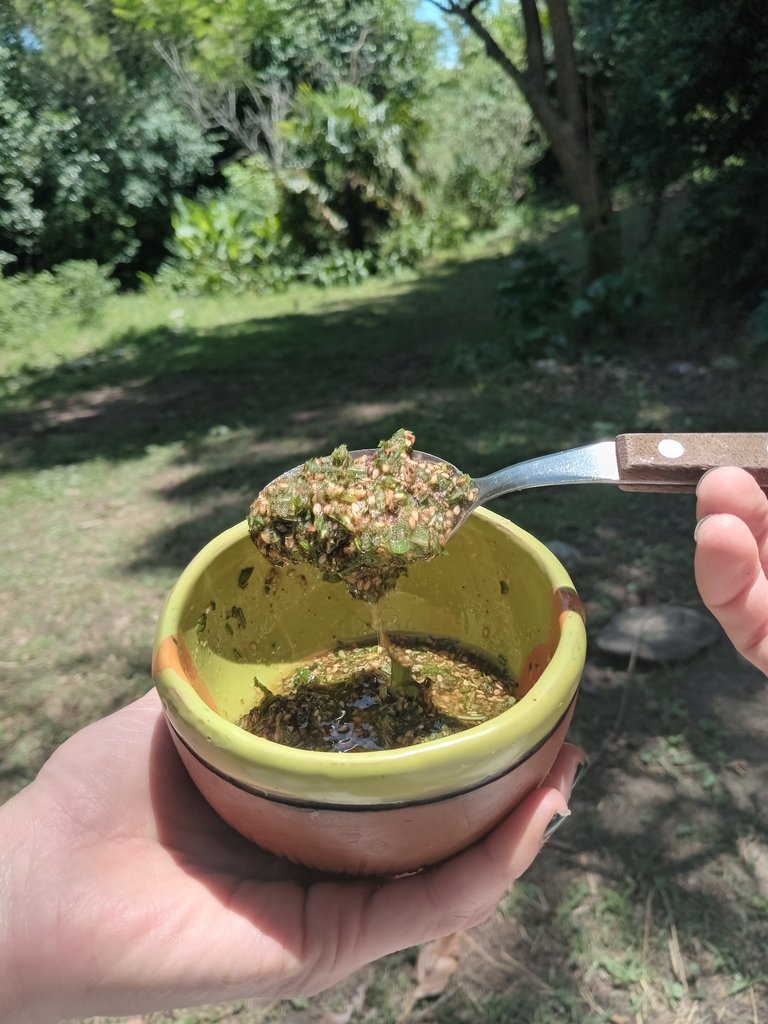In Argentina Chimichurri is a familiar sight on the table during communal asados (BBQs) and in most restaurants during lunch & dinner.
While the neighboring country of Bolivia has dozens of native recipes Argentina has quite few. If you were to go to a restaurant here in our little town or in the closest city you will find pasta, pizza, and the like. So, in an effort to connect more with the culture of this land that has been my home for five years I want to try out more of these recipes and (of course) put my own herbal spin on this tradition.

Clicking around online I saw a few variations to chimichurri sauce. Most agree on the main ingredients of parsley, garlic, oregano, lemon juice, olive oil, a bit of salt, and a sprinkling of red chili flakes. My recipe, however, was dictated on the fresh herbs I have available in the garden. Also, I knew I wanted to add a bit of soaked & toasted seeds. So, while the sesame seeds that I had soaked the night before toasted on the cast iron pan I went out to gather a handful of herbs.

I picked thyme, oregano, garden sage, and rosemary to go alongside the chopped raw garlic, lemon juice, olive oil, vinegar, salt, pepper, and chili flakes. With a mortar I ground the sesame seeds by hand, then added in the liquid ingredients of olive oil, vinegar, and lemon juice. While the seeds soaked in those three ingredients I chopped the fresh herbs and garlic as finely as I could with a sharp knife and mixed them all in with the salt, pepper, and chili flakes.

As I prepared the sauce I realized that chimichurri really isn't all to different from the herbal pestos that I love to make. The main difference is the absence of basil and the addition of chili flakes. As the gardening/foraging season continues I am excited to try different variations of chimichurri using native and wild ingredients too ~ like the leaf of wild quinoa, a native medicinal plant called peperina, and an invasive weed with tons of health benefits called amor seco.
Typically chimichurri is served on grilled meats and poured by the spoonful into empanadas. The herbs add a wonderful flavor and much needed greenery to the modern Argentine diet that mostly consists of meat & white bread. Besides their color the herbs themselves also support the digestive system which, as you can image, does not thrive on meat and bread alone. Rosemary, oregano, thyme, sage, and garlic have so many health attributes so anyway to incorporate them into our diets in simple meals is welcome!
That looks so nice, as well as incredibly healthy. I need to plant more herbs, but our garden hasn't got many truly sunny spots left - too many fruit bushes and trees. I might have to trim a couple of hedges and bushes back and put a really tall raised bed in to make a sun-trap.
that sounds like a great idea! most of these herbs also do well in pots so maybe you can set the potted plants up in a sunny place. I am happy at the thought of herbs amongst the fruit bushes and trees <3
I like the idea of pots ! We could move them around the garden with the seasons to follow where the sun shines best 😀 It might also stop the mint getting out of control.....
This must be medicinal!
such a good mix...
...and thanks for the cultural sharing...
Thank YOU for stopping by my blog 🌱
My pleasure!
There is always something new to learn from you...
.. presented in a calm and educative way..
calm and educative is exactly my goal ~ thank you!!